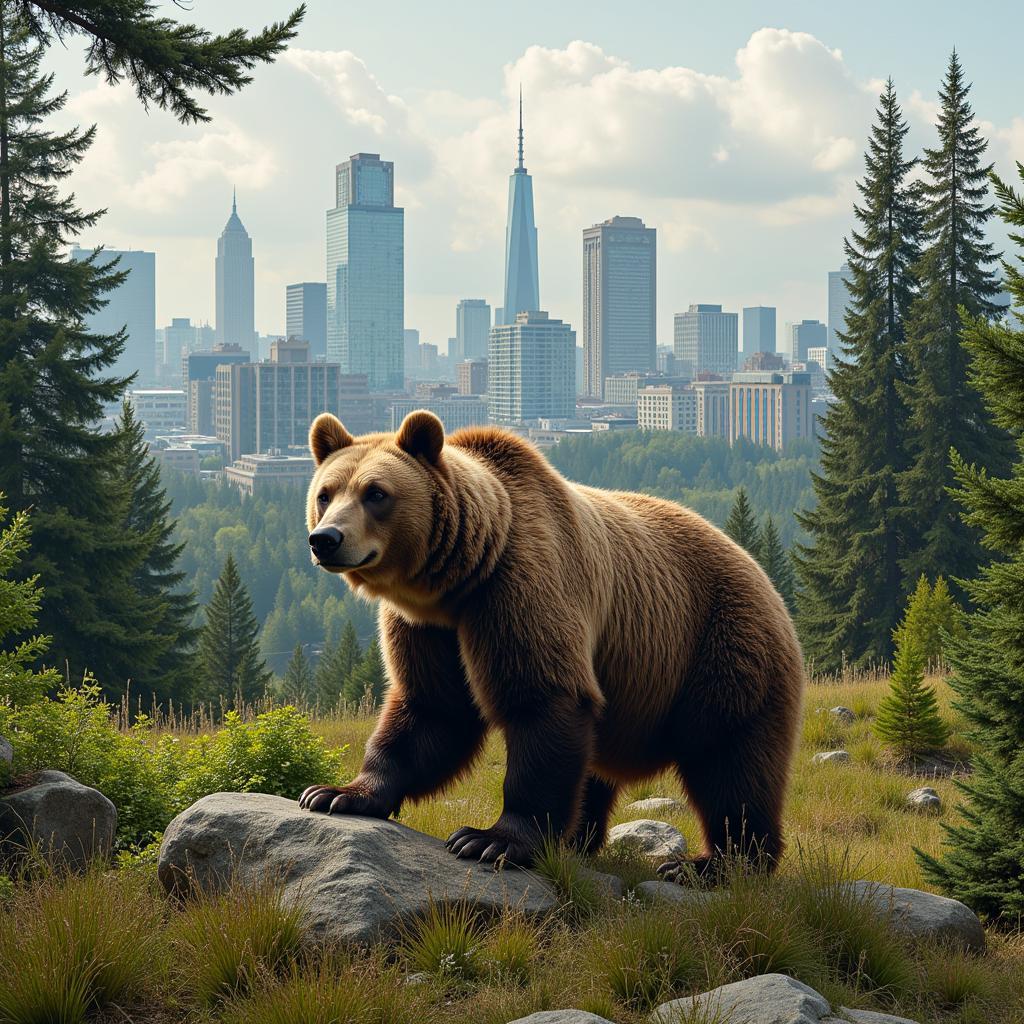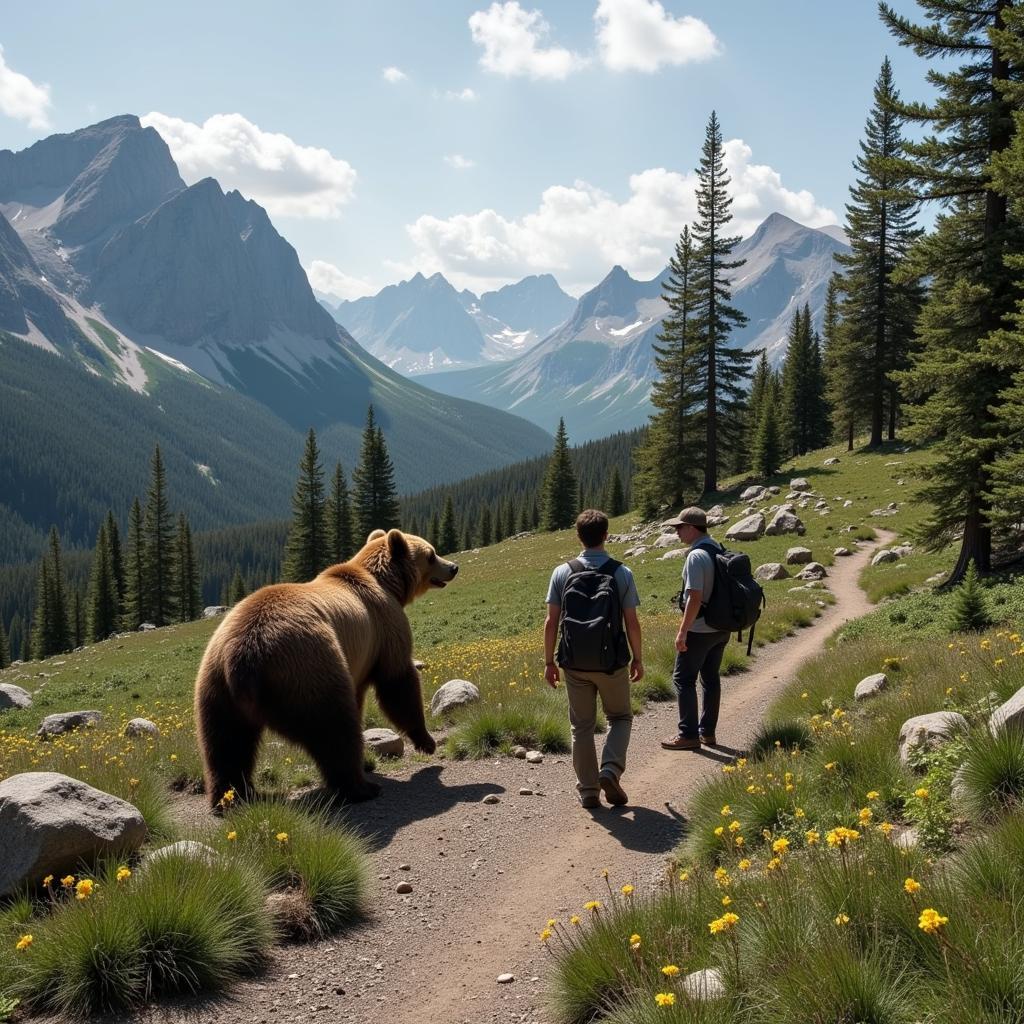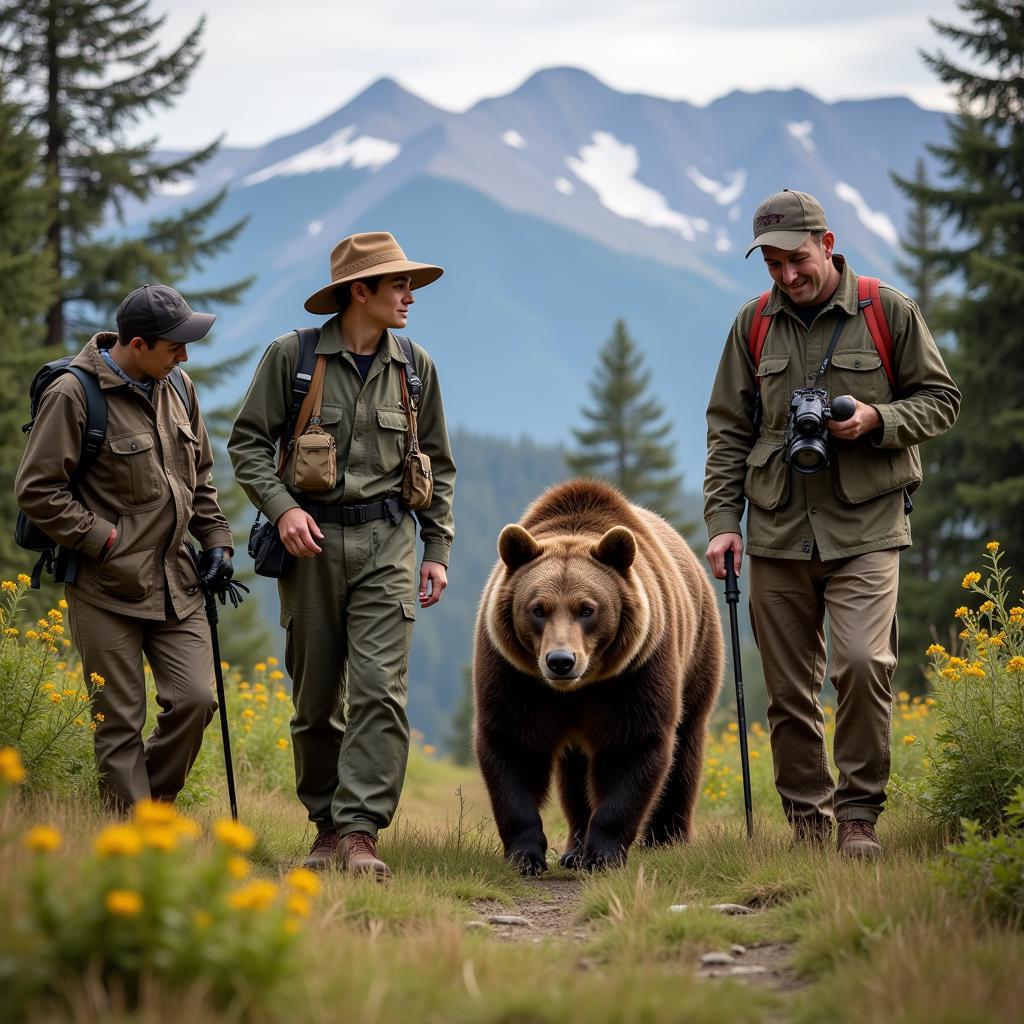“Grizz The Society” – a phrase that might seem unusual at first glance, yet it holds a deeper meaning when we delve into the intricate relationship between grizzly bear conservation and its profound impact on society. This article explores the multifaceted dimensions of this connection, shedding light on the crucial role we play in ensuring the well-being of these majestic creatures and, in turn, our own.
 Grizzly Bear and its Impact on Society
Grizzly Bear and its Impact on Society
The Significance of Grizzly Bears in the Ecosystem
Grizzly bears, as apex predators, hold a position of immense ecological importance. Their presence, or lack thereof, sends ripples throughout the intricate web of life. As a keystone species, they help regulate prey populations, preventing overgrazing and maintaining the delicate balance of their ecosystems. Their foraging habits, such as digging for roots and berries, also contribute to seed dispersal and soil aeration, fostering healthy plant communities.
Beyond their ecological role, grizzly bears carry significant cultural and spiritual value for many indigenous communities. These communities have coexisted with grizzlies for centuries, recognizing them as symbols of strength, wisdom, and the interconnectedness of all living things. Their traditional knowledge and practices play a crucial role in conservation efforts, emphasizing respect and understanding for these awe-inspiring creatures.
Threats to Grizzly Bear Populations: Where Society Plays a Part
Despite their ecological and cultural importance, grizzly bear populations face numerous threats, many of which are directly linked to human activities. Habitat loss and fragmentation due to urbanization, infrastructure development, and resource extraction continue to push these bears into smaller, isolated areas, increasing the risk of human-wildlife conflict.
 Human-Wildlife Conflict: Grizzly Bear Encounters
Human-Wildlife Conflict: Grizzly Bear Encounters
Furthermore, climate change poses a significant threat to grizzly bear populations. Rising temperatures and altered precipitation patterns impact the availability of their food sources, forcing them to venture further afield in search of sustenance, increasing the likelihood of encounters with humans and potential conflicts.
The Role of Society in Grizzly Bear Conservation: Towards a Harmonious Coexistence
Protecting grizzly bears and ensuring their long-term survival requires a collective effort from society as a whole. This includes supporting conservation organizations working tirelessly to protect grizzly bear habitat, promoting responsible tourism practices in bear country, and advocating for policies that prioritize wildlife corridors and connectivity between fragmented habitats.
Education and awareness are paramount in fostering a culture of coexistence. By understanding grizzly bear behavior, respecting their space, and adopting responsible practices such as proper food storage and waste disposal when venturing into their territories, we can minimize the risk of conflict and contribute to their well-being.
 Grizzly Bear Conservation: A Collective Effort
Grizzly Bear Conservation: A Collective Effort
“Grizz the society” – a phrase that underscores the interconnectedness between the fate of grizzly bears and the well-being of society. By recognizing the crucial role these animals play in maintaining healthy ecosystems, respecting their cultural and spiritual significance, and actively contributing to their conservation, we can pave the way for a future where both grizzlies and humans can thrive in harmony.
FAQs about Grizzly Bears and Society
Q1: What should I do if I encounter a grizzly bear in the wild?
A: Stay calm, talk in a calm voice, and slowly back away while keeping an eye on the bear. Avoid running as it may trigger a chase response. If the bear approaches, stand your ground, make yourself look larger, and use bear spray if necessary.
Q2: How can I contribute to grizzly bear conservation?
A: Support reputable conservation organizations, educate yourself and others about responsible behavior in bear country, and advocate for policies that protect grizzly bear habitat.
Q3: What are the biggest threats to grizzly bear populations?
A: Habitat loss and fragmentation, human-wildlife conflict, and climate change are among the most significant threats to grizzly bear populations.
Q4: Why are grizzly bears important to the ecosystem?
A: As apex predators and a keystone species, they regulate prey populations, disperse seeds, and contribute to the overall health and balance of their ecosystems.
Q5: What is the cultural significance of grizzly bears?
A: Grizzly bears hold significant cultural and spiritual value for many indigenous communities, symbolizing strength, wisdom, and the interconnectedness of all living things.
Need Help? Contact Us!
For more information about “Grizz the Society” and how you can get involved in promoting peace and understanding, please don’t hesitate to contact us:
- Phone: 02043854663
- Email: [email protected]
- Address: Khu 34, Bắc Giang, 260000, Việt Nam
Our dedicated team is available 24/7 to assist you. Let’s work together towards a more peaceful world!